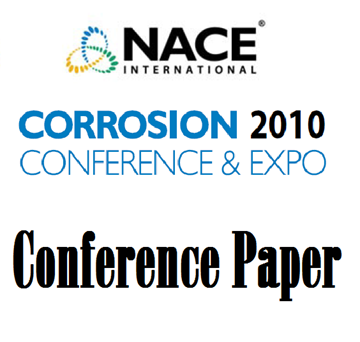Search
10156 The In-Situ Assessment of Pitting Corrosion and its Inhibition Using LCM
Also Purchased
07658 Predicting Internal Pitting Corrosion of Oil and Gas Pipelines: Model Prediction vs. Field Experience
Product Number:
51300-07658-SG
ISBN:
07658 2007 CP
Publication Date:
2007
$20.00
08542 Further Validation of an Internal Pitting Corrosion Model
Product Number:
51300-08542-SG
ISBN:
08542 2008 CP
Publication Date:
2008
$20.00
10332 Sour and Sweet Corrosion of Carbon Steel: General or Pitting or Localized or All of the Above?
Product Number:
51300-10332-SG
ISBN:
10332 2010 CP
Publication Date:
2010
$20.00




